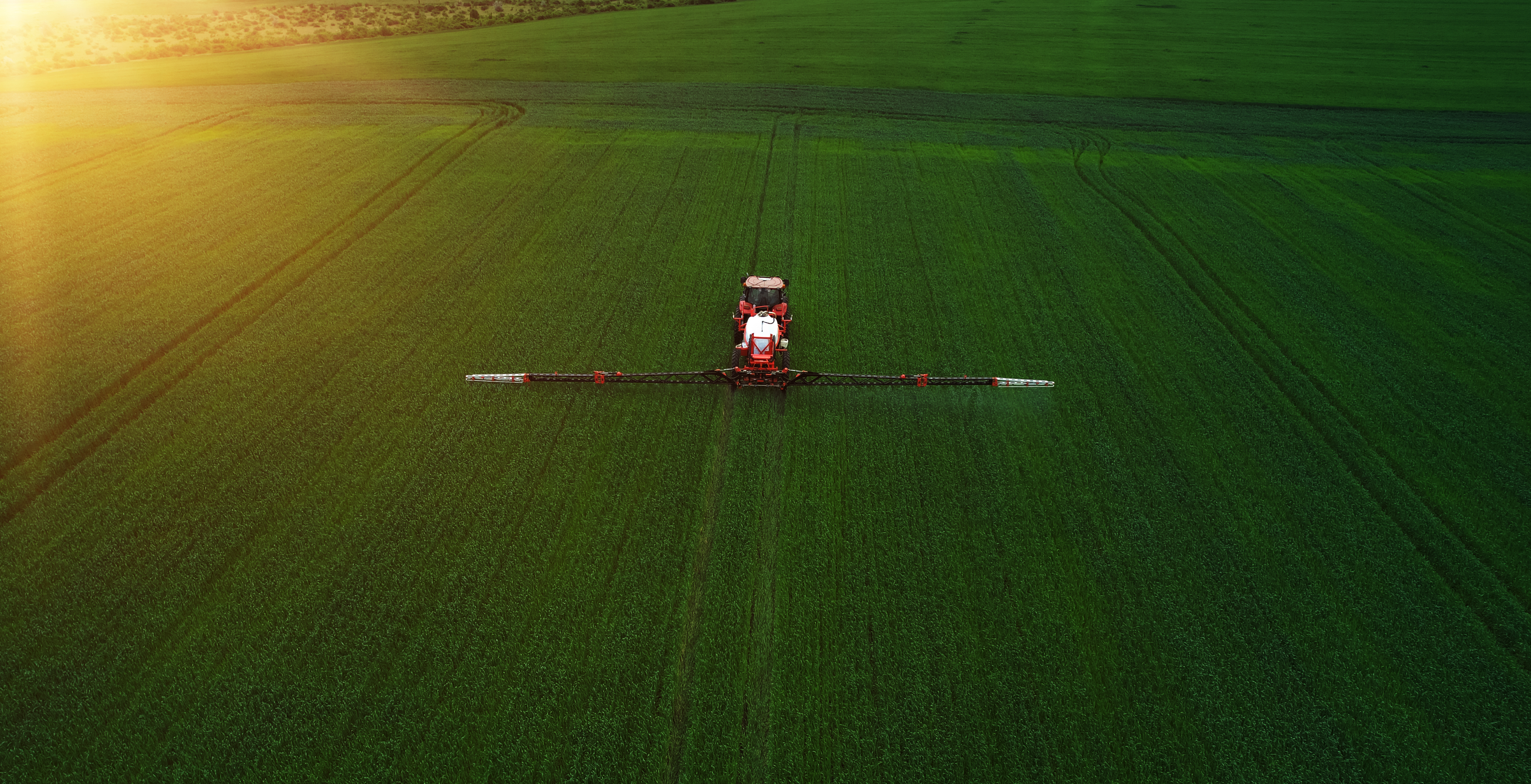
Corn N Calculator
The University of Nebraska-Lincoln's created its new Nitrogen Tool in 2023 to help ag producers determine the appropriate application of nitrogen for individual fields, as well as to help determine yield goals. An updated version of the corn N calculator, the tool is available as both a mobile app and a web tool.

Soil Sampling
Soil sampling is needed to determine soil nutrient needs and optimize fertilizer use and to assess soil variability across the field. See these guides for further information:
Guidelines for Soil Sampling (G1740)
Soil Sampling for Precision Agriculture (EC154)

Nebraska Fertilizer Nitrogen Recommendations
The Long View of Nitrogen Recommendations from Nebraska Extension
A Bibliography of Nitrogen (N) Related Publications from the UNL Soils Faculty (1952-2019)
Contact:
Bijesh Maharjan
Soil and Nutrient Management Extension Specialist
(308) 632-1372
bmaharjan@unl.edu
Faculty Bio

Contact:
Javed Iqbal
Nutrient Management and Water Quality Specialist
(402) 762-1432
javed.iqbal@unl.edu
Faculty Bio

Nutrient Deficiencies
- Key to Nutrient Deficiencies in Soybean
- Key to Nutrient Deficiencies in Wheat and Other Small Grains
- Key to Nutrient Deficiencies in Corn and Sorghum
Plant symptoms can be used to differentiate and identify crop nutrient disorders. Symptoms of nutrient deficiency vary with variety, growing conditions, and plant age. Similar symptoms may be caused by other abiotic or biotic stresses. Use these symptom keys to help identify nutrient disorders observed in Nebraska corn and sorghum, soybean, or wheat and small grains.
For more information on these and related topics, see the UNL Extension publication, Nutrient Management for Agronomic Crops in Nebraska, EC155, available online, or in soft cover through your local Extension office.


Soil Management Software
- Corn Nitrogen Recommendations Calculator New
- Maize N — A program for estimating corn N needs and in-season losses.
- Hybrid-Maize Model - A computer program for simulating corn growth and yield
- Winter Wheat Fertilizer Calculator. Use this calculator in conjunction with Fertilizing Winter Wheat, Extension Circular EC 143
- 2012 Nebraska P-Index (Excel): Instructions at Nebraska PI Documentation and Troubleshooting Guide
- Nitrogen Loss Assessment Tool (N-LAT) for Nebraska: Download this Excel tool used to estimate average N loss to leaching, volatilization, denitrification, and nitrous oxide emission for corn and soybean production. See Background Information and Users Guide for N-LAT (NebGuide G2249).
- The Value of Manure: A simple calculator (Excel) for estimating the value of manure. Corresponds with the NebGuide G1519: Calculating the Value of Manure for Crop Production
- Whole Farm Nutrient Balance(.xls) Instructions: Estimating a Whole Farm Nutrient Balance EC189
- Nutrient Inventory (Excel) Instructions: Manure Nutrient and Land Requirement Estimator EC190
- Fertilizer Use Optimization in Africa
Additional Resources
Corn Publications
- Site-Specific Nitrogen Management for Irrigated Corn, EC163 (*Extension Circular PDF, 466 KB; 8 pages)
- No-till corn often has an early growth response to starter fertilizer: Using Starter Fertilizers for Corn, Grain Sorghum and Soybeans G361 (*PDF version 642 KB; 3 pages)
- Much nitrogen is often applied which needs to be well managed to minimize water contamination: Agricultural Nitrogen Management for Water Quality Protection in the Midwest: a Heartland Regional Water Coordination Publication, RP189 (*PDF 1.85 MB, 32 color pages).
- Soil sampling is essential to good nutrient management. Guidelines for Soil Sampling, G1740, (924 KB 4 pages).
Soybean Publications
- In western Nebraska, soybean often responds to starter fertilizer: Using Starter Fertilizers for Corn, Grain Sorghum and Soybeans, NebGuide G361. (*PDF version, 643 KB; 3 pages)
- Soil acidity and soil compaction may constrain yield: Lime Use for Soil Acidity Management, NebGuide G1504. (*PDF version, 1.02 MB; 4 pages)
- Management to Minimize and Reduce Soil Compaction, NebGuide G896. (*PDF version, 786 KB; 4 pages)
- Use and Management of Micronutrient Fertilizers in Nebraska, NebGuide G1830, (*PDF version, 1.17 MB, 4 color pages)
- Management Strategies to Reduce the Rate of Soil Acidification, NebGuide G1503, (*PDF version, 759 KB; 4 pages)
Sorghum Publications
- Nutrient application is often needed to optimize sorghum production. Fertilzer nutrient needs for grain sorghum are based on expected yield, nutrient levels in the soil, and fertilizer-nitrogen costs: Fertilizer Suggestions for Grain Sorghum, NebGuide G1669 (*PDF, 593 KB 4 pages)
- Grain sorghum often has an early growth response to starter fertilizer: Using Starter Fertilizers for Corn, Grain Sorghum and Soybeans, NebGuide G361. (*PDF, 643 KB; 3 pages)
- Soil acidity and soil compaction may constrain yield: Lime Use for Soil Acidity Management, NebGuide G1504. (*PDF, 1.02 MB; 4 pages)
- Management to Minimize and Reduce Soil Compaction, NebGuide G896. (*PDF, 786 KB; 4 pages)
- Management Strategies to Reduce the Rate of Soil Acidification, NebGuide G1503, (*PDF, 759 KB; 4 pages)
- Nutrient Management for Agronomic Crops in Nebraska, EC 155, download *PDF version free (968 KB).
- UNL Starter Fertilizer Study for Sorghum
Wheat Publications
- Download the Winter Wheat Fertilizer Calculator for winter wheat fertility. (MS Excel file). Use this calculator in conjunction with the following publication:
- Fertilizing Winter Wheat (Extension Circular 143)
- Management to Minimize and Reduce Soil Compaction (NebGuide G896)
- Soil erosion by water or wind affects agricultural areas by degrading the soil resource on the farm and creating unwanted off-site deposition of soil. Wind erosion is a widespread problem in the semi-arid regions of western Nebraska, where much of the winter wheat crop is grown. Wind Erosion and Its Control (NebGuide 1537) This NebGuide discusses how wind erosion occurs and presents methods for reducing wind erosion on land devoted to crop production.
Free Slide Rule Offers Quick Calculation for Nitrogen Rates

More information on how to obtain your free slide rule from CropWatch.
